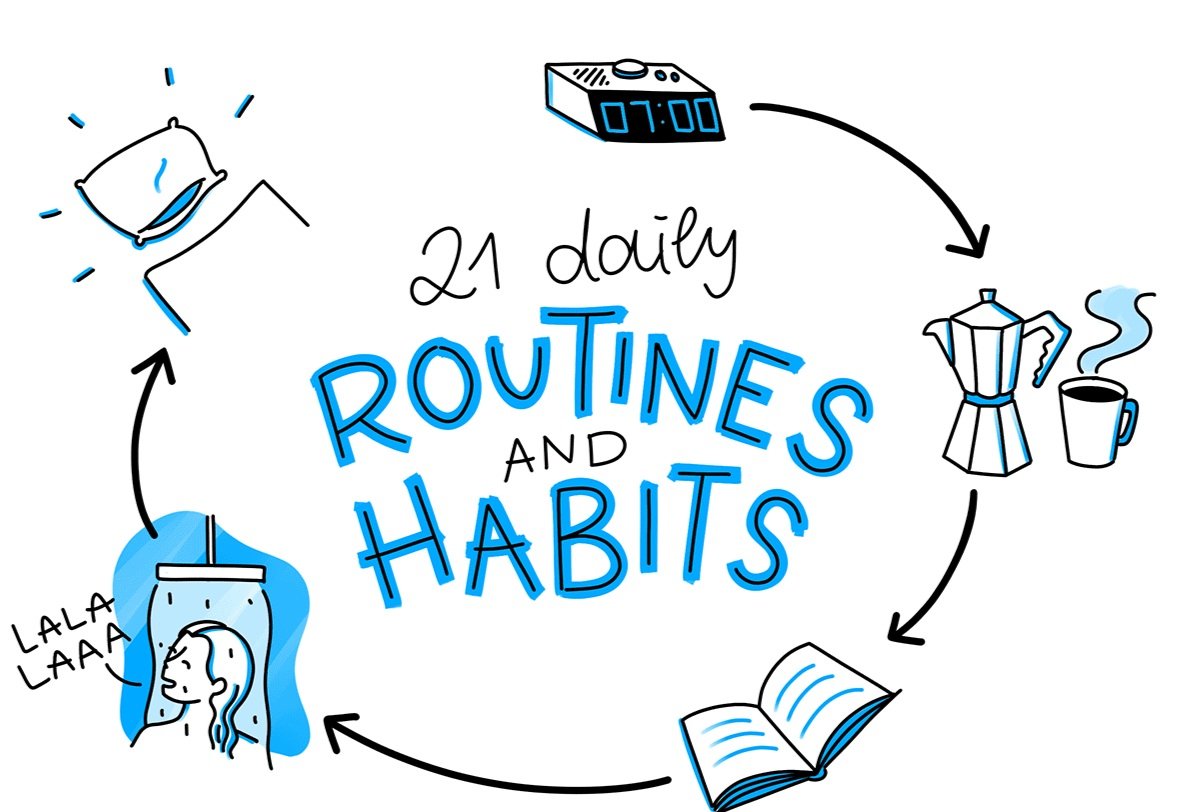Unveiling the Depths of the Mind: The Fascinating World of Dream Analysis
Dreams have long captivated and puzzled humankind. They offer glimpses into a realm where reality intertwines with imagination, where our deepest fears, desires, and emotions manifest in surreal and sometimes bewildering forms. Throughout history, societies and cultures have assigned great significance to dreams, recognizing their potential for unlocking hidden truths and guiding individuals on their journey of self-discovery. Dream analysis, a field that seeks to interpret the symbolism and meaning behind dreams, offers a fascinating lens into the workings of the subconscious mind. In this blog post, we delve into the world of dream analysis, exploring its origins, methodologies, and the potential insights it can offer.
The Origins of Dream Analysis
Dream analysis finds its roots in ancient civilizations, with practices and beliefs associated with dreams dating back thousands of years. Among the earliest recorded instances of dream interpretation is found in ancient Mesopotamia, where dreams were considered messages from the divine realm. The Egyptians, too, placed great emphasis on dreams, viewing them as conduits between the earthly and spiritual realms. As time progressed, cultures such as the Greeks and Romans developed complex theories around dreams, associating them with prophecy, psychological states, and even as the means of divine communication.
The Pioneers of Dream Analysis
Sigmund Freud, the renowned Austrian psychoanalyst, is perhaps the most well-known figure associated with dream analysis. Freud's groundbreaking work on the interpretation of dreams in the late 19th century laid the foundation for modern dream analysis. He argued that dreams were the "royal road to the unconscious" and provided a means to access repressed thoughts, desires, and unresolved conflicts. Freud's theories, such as the symbolism of dreams and the distinction between manifest and latent content, continue to influence dream analysis today.
Carl Jung, a Swiss psychiatrist and contemporary of Freud, developed his own approach to dream analysis. Jung emphasized the collective unconscious, a repository of shared archetypal symbols and motifs that shape our dreams. He believed that dreams contained valuable insights into an individual's personal and collective unconscious, providing a pathway to self-realization and wholeness.
Methods of Dream Analysis
Various methodologies exist within the realm of dream analysis, each with its own unique approach. Some common methods include:
Symbolic Interpretation: Dreams often utilize symbols to convey meaning. Analyzing the symbolic elements within a dream can uncover hidden emotions, desires, and fears. For example, dreaming of water may represent one's emotional state, while dreaming of a bridge might symbolize a transitional phase in life.
Personal Associations: Exploring personal associations and connections to dream imagery can shed light on individual interpretations. A particular object or person in a dream may hold personal significance that only the dreamer can uncover.
Narrative Analysis: Examining the overall narrative structure of a dream can reveal underlying themes and patterns. Identifying recurring motifs or settings may provide insights into ongoing challenges or recurring emotions.
Benefits and Insights
Dream analysis can offer numerous benefits and insights for those willing to explore their dreams. It can provide a deeper understanding of one's unconscious mind, bringing awareness to suppressed emotions, unresolved conflicts, and unexpressed desires. Engaging in dream analysis can also facilitate personal growth, self-reflection, and creative inspiration. By decoding the symbolism and narratives within dreams, individuals can gain valuable insights into their lives, relationships, and personal journeys.
Dream analysis remains a captivating field that continues to intrigue and inspire. Whether one chooses to explore dreams through the lens of psychological theories or more spiritually oriented practices, the study of dreams offers a pathway to self-discovery and a deeper understanding of the human psyche. While the interpretation of dreams may not provide definitive answers, it undoubtedly enriches.
Unveiling the Digital Mirror: The Impact of Social Media
The world is at our fingertips and social connections are just a click away. Social media has become an integral part of our lives, transforming the way we communicate, share information, and perceive ourselves. While it offers numerous benefits, it is essential to critically examine the impact of this digital phenomenon on our mental health and well-being.
The Allure of the Digital Self
In the virtual realm of social media, we are presented with a unique opportunity to curate and present our digital selves. Our profiles, posts, and pictures shape our online persona, often accentuating the positive aspects of our lives. This curated self, however, can create a sense of pressure to maintain an illusion of perfection. The concept of the ego or sense of self comes into play here, as the individual strives to maintain a cohesive and socially desirable identity, often leading to anxiety and self-doubt. This is particularly the case for teens, who are going through what psychoanalyst Erik Erikson called Fidelity with the big conflict being Identity vs. role confusion in his life-stage model with the central tenant of Who am I, during which time they are conflicted with dozens of values and ideas of who they should be and what they should think.
Validation Quest
One of the most enticing aspects of social media is the gratification it provides in the form of likes, comments, and shares. This instant validation taps into our deepest human desires for acceptance and belonging. We seek positive reinforcement from our peers, mirroring Freud's concept of the pleasure principle and the pursuit of immediate gratification. However, when the quest for validation becomes excessive, we may fall into the trap of comparing ourselves to others, leading to feelings of inadequacy and a negative impact on self-esteem.
A Filtered Reality
Social media have become breeding grounds for carefully constructed narratives and idealized versions of reality. The concept of a digital mirror is particularly relevant here, where we project a distorted image of ourselves and perceive others through a similar filter. This filtered reality can fuel feelings of envy and insecurity, as we compare our lives to others.
Connection Lost
Paradoxically, while social media offers opportunities for connection, it can also exacerbate feelings of loneliness and isolation. Spending excessive time on these platforms can lead to reduced face-to-face interactions, fostering a sense of disconnection from real-world relationships. Furthermore, the constant exposure to others' seemingly perfect lives can intensify feelings of loneliness, as we may perceive ourselves as lacking such fulfilling connections. As social beings we have innate needs around connection, which became particularly clear during the pandemic, and that we crave authentic connections, and when these needs go unmet, our mental health suffers.
Overexposure and it’s Perils
Social media platforms are designed to captivate and retain our attention, often leading to excessive and mindless scrolling. This perpetual scrolling syndrome, akin to an addiction, can consume significant amounts of our time and energy. Freud's theory of the pleasure principle and the unconscious desire for gratification is at play here, as we seek pleasure and escape from the pressures of reality. However, this addictive behavior can disrupt our sleep patterns, impair productivity, and negatively impact our overall well-being.
Social media has undoubtedly transformed the way we interact, communicate, and perceive ourselves. As it continues to shape our lives, it is crucial to approach it with a critical and self-reflective lens. Understanding the psychological aspects of our digital experiences can empower us to navigate the social media landscape with greater awareness and mindfulness. It is by understanding these different parts of ourselves, and their wants and needs, that we can strive for a healthier relationship with social medica and more fundamentally ourselves.
What Does Psychodynamic Even Mean?
Psychodynamic therapy is a form of therapy that focuses on exploring the unconscious processes and early life experiences that shape an individual's thoughts, emotions, and behaviors. While there is ongoing debate regarding the extent to which psychodynamic therapy is considered evidence-based, there is a growing body of research supporting its effectiveness.
Aspects of psychodynamic therapy that are often highlighted:
Exploration of the unconscious: Psychodynamic therapy aims to uncover and bring awareness to unconscious conflicts, desires, and motivations that may be contributing to psychological distress.
Importance of the therapeutic relationship: The therapeutic relationship is seen as a crucial factor in facilitating change. The therapist provides a supportive and nonjudgmental environment for the client to explore their thoughts and feelings.
Focus on early life experiences: Psychodynamic therapy emphasizes the influence of early childhood experiences and relationships in shaping one's personality and patterns of behavior.
Uncovering defense mechanisms: Defense mechanisms are psychological strategies that individuals unconsciously use to protect themselves from anxiety. Psychodynamic therapy helps identify and understand these defense mechanisms, allowing for more adaptive coping strategies to be developed.
Interpretation and insight: The therapist interprets the client's thoughts, feelings, and behaviors to provide insight into underlying conflicts and unresolved issues. This helps the client gain a deeper understanding of themselves.
Exploration of transference: Transference refers to the client's unconscious feelings and attitudes towards the therapist that are based on past experiences. Psychodynamic therapy explores these dynamics to gain insight into the client's interpersonal patterns.
Working through unresolved issues: The therapeutic process involves working through unresolved issues, conflicts, and traumas from the past. By bringing these experiences to consciousness, the client can process and integrate them in a healthier way.
Emotion-focused approach: Psychodynamic therapy recognizes the significance of emotions and aims to help clients explore and express their feelings in a safe and supportive environment.
Long-term therapy: Psychodynamic therapy often involves longer-term treatment, allowing for a more comprehensive exploration of underlying issues and the development of lasting change.
Integration of self: The ultimate goal of psychodynamic therapy is to facilitate the integration of different aspects of the self, leading to a more cohesive and authentic sense of identity.
While these aspects are generally associated with psychodynamic therapy, it's important to note that therapy approaches can vary among different therapists and schools of thought within psychodynamic theory.
Interpersonal Psychoanalysis Five Points
Psychology has always been fascinated by the complex interplay between individuals and their relationships. Interpersonal psychoanalysis, a branch of psychodynamic therapy, delves deep into the dynamics of human interactions and their impact on mental health. Post aims to explore the unique features and distinguishing characteristics of interpersonal psychoanalysis in comparison to other forms of therapy.
Focus on Relationships
While traditional psychoanalysis tends to emphasize the exploration of the unconscious mind, interpersonal psychoanalysis places a primary focus on relationships and social interactions. It recognizes that the quality of an individual's relationships plays a pivotal role in shaping their psychological well-being. By understanding the impact of significant relationships and interpersonal patterns, interpersonal psychoanalysis aims to alleviate psychological distress and improve overall functioning.
Relational Dynamics
Interpersonal psychoanalysis places great importance on the dynamics between therapist and client, acknowledging that the therapeutic relationship itself can be an invaluable source of insight and healing. Unlike some other therapeutic approaches that adopt a more distant or detached stance, interpersonal psychoanalysis actively encourages exploration of the transference and countertransference processes that emerge within the therapeutic relationship. These dynamics shed light on unconscious patterns of relating and offer opportunities for growth and transformation.
Exploration of Early Experiences
Similar to other psychodynamic approaches, interpersonal psychoanalysis recognizes the influence of early experiences on an individual's development. It explores how early relationships, especially with primary caregivers, shape one's attachment style and patterns of relating. This understanding helps uncover the roots of current relationship difficulties and supports the development of healthier interpersonal patterns.
Holistic Perspective
Interpersonal psychoanalysis takes a holistic perspective, acknowledging the influence of societal and cultural factors on individuals and their relationships. It recognizes that social contexts and cultural norms can significantly impact one's sense of self, identity, and interpersonal functioning. By examining these broader contextual factors, interpersonal psychoanalysis aims to address the interplay between the individual and their social environment.
Emphasis on Collaboration
Interpersonal psychoanalysis promotes a collaborative and egalitarian therapeutic relationship. It encourages the active participation of both the therapist and the client in the exploration and understanding of interpersonal patterns. The therapist serves as a guide, helping the client gain insights into their relational dynamics and providing support as they work toward change. This collaborative approach fosters a sense of empowerment and ownership in the therapeutic process.
Interpersonal psychoanalysis offers a distinct and valuable perspective within the field of psychotherapy. Its emphasis on relationships, relational dynamics, early experiences, and social contexts sets it apart from other therapeutic approaches. By exploring and understanding the intricacies of interpersonal interactions, individuals undergoing interpersonal psychoanalysis gain insight into their patterns of relating, paving the way for personal growth, healthier relationships, and enhanced overall well-being.
Daily Habits
Establish Routines
Start off with ones you can stick with! The ones that get you out the door should remain consistent from one day to the next. This will reduce morning stress. Stress can be even further reduced by setting up morning actives the night before. Putting your clothes and lunch out or setting up your coffee can minimize morning confusion and maximize ease. Signing time limits for each task can be especially helpful. Alarms can be particular helpful in this arena, especially when it supports positive self-referencing behavior such as 5 minutes to get dressed, 5 minutes to brush teeth and hair, 20 minutes for breakfast, 5 minutes to gather things, and put on shoes.
Homeward Bound
After work, allow yourself to decompress for 30-45 minutes and then it’s time to get down to some task. It can help to plan a fun activity to do once work is completed. This will help you work steadily and with motivation to complete the tasks at hand and support feeling relaxed for the rest of the evening.
Lists
Use a checklist to write down all the tasks due the next day. Cross off each one as it is completed to gain a sense of triumph and forward momentum. Use another checklist to keep track of upcoming assignments, events, and activities for the month. Color-coding can be helpful in tacking short, medium and long term tasks as visual aids can be incredible helpful for the ADHD brain.
Slow-Down to Speed Up
Losing motivation? Set a timer and let yourself work against the timer. This also sets a finite amount of time to an assignment that you can feel like will ‘never end!’
It’s in the doing that things are done
By engaging in the same strategies consistently we strength them into habits and in doing so free ourselves. No longer having to think about it — you just do it!
When we start/stop routines it can make habit forming difficult but also ungrounded. Setting up a different routine for the weekend or time off work is great, but otherwise sticking to the routine is key!
February Articles
A collection of links to various news & journal articles in February.
Yale’s Happiness Professor Says Anxiety Is Destroying Her Students: “Back up, back up….So it’s not a story of Even the happiness professor isn’t happy. This is a story of, I’m making these changes now so I don’t get to that point of being burned out”.
Your Body Knows You’re Burned Out: Here’s how to recognize the physical symptoms of work-related stress — and what to do about them.
The ‘Nation’s Psychiatrist’ Takes Stock, With Frustration: Article with the former head of National Institute for Mental Health, tenure at NIMH emphasis on genetics and less on behavioral health innovation, navigating research, funding.
After Sexual Harassment Lawsuit, Critics Attack Harvard’s Release of Therapy Records
Cognitive–affective factors underlying disinhibitory disorders and legal implications: Examining cognitive-affective factors for elucidating how people may perceive, interpret or act on information as related to disinhibition-based diagnosis and its impact on individuals, society, and implications for justice systems.
An overview of and recommendations for more accessible digital mental health services: A review describing the evidence base for digital mental health interventions, formats for delivery, Covid-19 impact on development and implementation, and issues related to equity among diverse populations of race, age, and class.
Perception of body size and body dissatisfaction in adults: Investigated perception of weight, specifically related to work addressing obesity and ways to support reality testing, implications for health.












